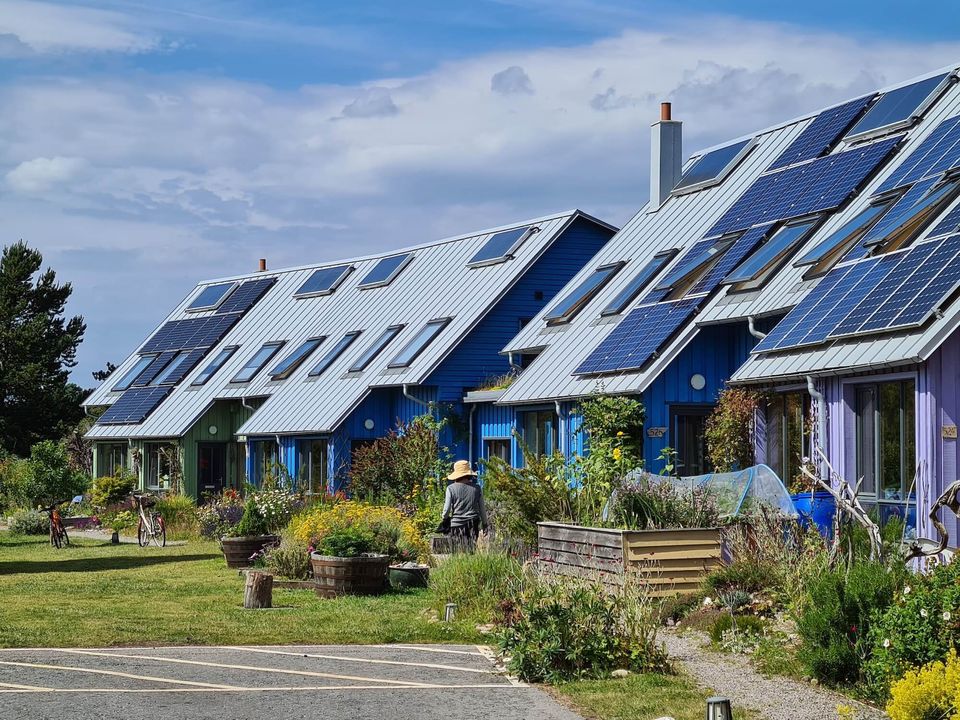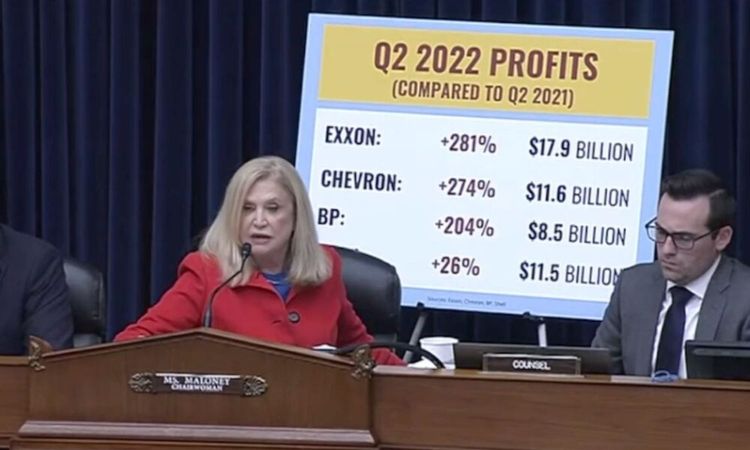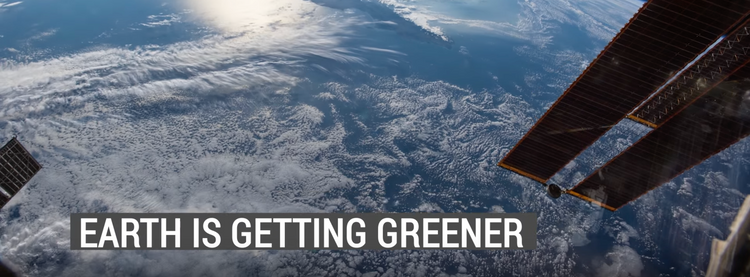Drilled Down: Debunking Demand (IPCC Mitigation Report, Part 1)

Every few years the Intergovernmental Panel on Climate Change (IPCC) releases an assessment, which consists of several reports prepared by three working groups. Working Group I focuses on the scientific evidence for climate change; Working Group II on the impacts, adaptation and vulnerabilities; and Working Group III on mitigation, what we can do about it (and what's stopping us). The 2018 IPCC report got a LOT of media attention, more than any previous report, thanks to a combination of uncharacteristically stark warnings from climate scientists and a media cycle that wasn't quite as inundated with crises as the current one.
On April 4, 2022, the IPCC released the mitigation report for its current cycle and folks if the 2018 report was blunt, this one is absolutely screaming "do something!!!" Yet, coverage was as slim as those pre-2018 days. There are lots of mitigating circumstances, 'scuse the pun. For a start, the release of the report was pushed back thanks to the fraught approval process for the report's Summary for Policymakers, or SPM (you can read more about that here). That meant that reporters got zero time with the actual report before we had to write about it, which was particularly problematic because some government representatives involved in the SPM process succeeded in watering it down so much it reads like the summary of an entirely different report. Plenty of reporters will only read the SPM; if they do, they'll miss the importance of this report. Then of course there's Russia's invasion of Ukraine, subsequent war crimes, and the world bracing itself for WWIII. And the endless pulse of Covid-19 vibrating underneath at all. Not to mention mass shootings, insane school boards, book banning, a looming Trump 2024 campaign, the midterms that Democrats seem destined to lose, a Supreme Court nomination process that McConnell is doing everything to derail yet again. These are deeply troubled times. So I get why the story of yet another dire warning on climate might not register for some outlets.
But that's why I'm here. I'm a climate reporter. It's all I focus on, and pretty much all I think about, and I've been covering IPCC reports for 20 years so I've got a pretty good handle on them. And what I'm reading in this one is eye-opening in a lot of ways. So to all my reply guys who are like "well don't you already know what's in the report, things are still bad," I say actually what's in this report are the seeds for revolution, so let's take it all in shall we?
Throughout the month of April, I'll be posting weekly installments (at least) of analysis on this report, sometimes accompanied by bonus podcast episodes, sometimes not. These posts will be free, so feel free to forward or share. If you run a media outlet you're welcome to re-run anything, with appropriate attribution. If you feel so inclined, you can sign up for a paid subscription here, or via the button at the bottom of this post. Okay, here we go!
Debunking Demand (An Ode to Chapter 5)
There are a lot of new additions to the IPCC report this time around, but the newest and shiniest is Chapter 5 "Demand, services and social aspects of mitigation." Sounds kinda wonky and boring I know, but what it means is roughly: are people actually demanding fossil fuels, or even energy, or are they actually just demanding services? And that is a pretty revolutionary question.
Right away, first paragraph of the chapter they come out with: "People demand services and not primary energy and physical resources per se. Focusing on demand for services and the different social and political roles people play broadens the climate solution space."
Remember when car-sharing services first appeared in the U.S. and for a few years there people were like holy shit I don't actually need to own a whole car to myself, I just need to borrow a car occasionally? Or way before that when offices were like wait what we can just have a copier on loan? Magic! This is like that but for the whole economy. It upends a deeply held belief (yeah I said it, belief) in economics that demand will increase with economic growth.
"This is the first time we've ever had a chapter on demand because this idea about economic growth and demand being linked was just untouchable," environmental economist Julia Steinberger, a contributing author to chapter 5, says. "Everybody wants economic growth, so everybody wants demand to increase and that's it. But as soon as you start questioning it, you realize that it's a God with clay feet. That you can actually do a lot better with a lot less. There's nothing preventing us from doing a lot better and using a lot less, including resolving poverty and deprivation around the world."
That's huge because not only does it up-end a rigid belief about how economies work, it also obliterates one of the fossil fuel industry's favorite narratives: that people living in poverty need fossil fuels to get out of poverty.
"Energy poverty is the largest limiting factor to economic growth: some 3 billion humans rely on [biomass] for cooking and heating... the idea of “only wind, only solar” meeting these immense and growing energy needs is as unserious and unfair as it sounds."
— American Petroleum Institute (@APIenergy) June 15, 2020
"So there are lots of myths about the way we understand the economy," Steinberger says. "One of the myths is that it's demand driven when it's not. It's supply driven. So you can imagine that in phases of economies when everybody's in poverty, then you know, there's going to be a lot of demand that drives production. After a certain phase, basically you have an overproductive industry that's constantly driving productivity and competitiveness. And so at that point you start having overproduction and you need to find an outlet for that. Otherwise you get economic crises. And the outlet for that is various kinds of over-consumption or things like planned obsolescence. So it's basically like production is looking for outlets."
This is what American sociologists Allan Schnaiberg, David Pellow, and Kenneth Gould termed the "treadmill of production" in their seminal 2008 book by the same name. "Basically the fossil fuel industry is using this fake narrative of demand-driven production to excuse their activities," Steinberger says. "But as soon as you look at demand, the story crumbles. Because all we need is services; that's what there is demand for. We don't need the energy use itself. So let's think about how we deliver those services in a more efficient way."
Underpinning this idea is a new type of economic model: the Decent Living Energy model, which was pioneered by Dr. Narasimha D. Rao and his team at Yale. It aims to quantify the energy needs and climate change impacts of eradicating poverty and providing decent living standards to all. Steinberger and her group at the University of Lausanne in Switzerland collaborated with team at Yale to develop the first global Decent Living Energy model, which delivered another head-exploding result that made its way into Summary for Policymakers: It's possible to have decent living conditions for everybody at half the current energy use.
Paging Alex Epstein, Michael Shellenberger and all the rest of the debate-me bros making the "moral" case for fossil fuels.
"It's a pretty big result because it basically says all we need is services," Steinberger says. "We don't need the energy use itself. So then we can think about how we deliver those services in a more efficient way. And then we can demonstrate that what you need to do that exists already and you get to these results that are really quite staggering, that you can really do things very, very differently."
It's an idea that holds enormous potential for addressing the climate crisis. As in: "Demand-side strategies, categorised under Avoid, Shift, Improve, can reduce 40-70% of emissions across all sectors (high confidence)." That's a direct quote from the chapter.
Forty to 70 percent of emissions ACROSS ALL SECTORS...woahhhh why is this not a headline in every paper??!!
Well, the reasons I explained above, but also what we're talking about here is a fundamental shift of values in the economy, from what companies want to sell people to what people actually need to make their lives work. So it should probably come as no surprise that for-profit papers that generate revenue making ad campaigns for oil companies (cough cough The Washington Post AND The New York Times) are not shouting this from the rooftops.
But let's keep reading.
Not only did IPCC authors poke holes in the economic theories underpinning the fossil fuel industry's favorite story, they were also able to clearly demonstrate that fossil fuel expansion does not lift communities out of poverty, it does the opposite. That's something they were able to demonstrate so clearly it actually managed to stay in the Summary for Policymakers.
"What we were able to demonstrate was actually that there is no sustainable development—or development full stop—without climate mitigation," Steinberger says. "Unless you mitigate climate, the impacts are going to catch you every step of the way and just make people's lives increasingly hard and miserable, especially in Global South countries. And so this idea of a fossil fueled pathway to development is really a myth. There is no substance there because of the destructive power that it comes with."
So how exactly do we meet these needs, supply these services, and deliver these big reductions in emissions all at the same time? Chapter 5 suggests a few things:
- Lifestyle changes – In the next installment I'm going to dig into this deeper because what this draws on is the work of Dr. Kimberly Nicholas and others who have shown that the world's wealthiest 10% globally can have a tremendous impact on greenhouse gas emissions through behavior change (don't worry we're going to have a nuanced discussion of the old false individual v. systemic debate – obviously these choices need to be enabled by things like public transit, bikable streets, and so forth). Chapter 5 states: "Individuals with high socio-economic status have high behavioural plasticity and capability to reduce their GHG emissions, especially in mobility by flying less and utilising electric two, three, or four wheelers, by becoming role models of low-carbon lifestyles, by investing into low-carbon business, and by lobbying for stringent climate policies."
- Car-free and electrified transportation (this one has the largest potential to reduce CO2)
- Reduction in primary energy use (so, energy efficiency) and/or shift to renewable energy
- Policy levers like prohibitions, mandates, taxes, fees, and subsidies, but also choice- and agency-preserving interventions that shape the options available to citizens.
- Collective action by individuals as part of formal social movements or informal lifestyle movements
- Policies that increase the political access and participation of women, and racialised and marginalised groups, increase the democratic impetus for climate action
- Targeted and fair carbon pricing
There's more, a lot more. A whole blueprint really. Which is great because the other big news that didn't seem to make it into any headlines is that keeping warming to 2 degrees feels like a stretch goal at this point. I'm not going full doomer on you, but the reality is that in the ten years that we've known the most about what we need to do, average emissions have increased. We're going the wrong direction. And this offers not just a way to put us back on the right path, but to improve people's quality of life around the world, and do it quickly, and in many cases affordably, all while delivering the sorts of dramatic emissions reductions required to blunt this crisis.
This is the first of several installments analyzing the 2022 IPCC Mitigation Report. You can access the report and all ancillary materials here. If you're short on time, I highly recommend the Technical Summary, which is just slightly longer than the Summary for Policymakers but comes straight from the authors with no politicking.





